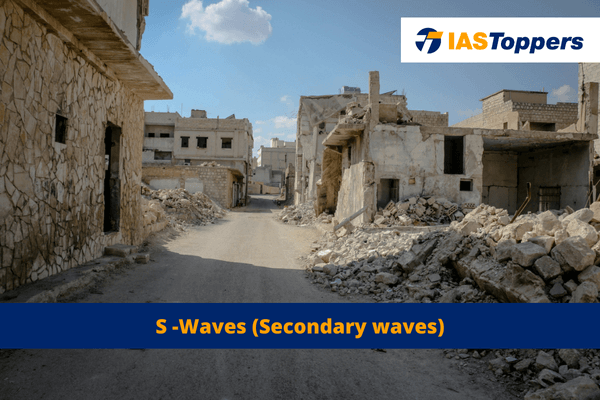S-Waves (Secondary Waves) are a type of elastic wave in seismology and other fields, also known as shear waves. They propagate through the body of an object and exhibit transverse motion perpendicular to the wave’s direction of propagation. S-Waves have a main restoring force derived from shear stress and cannot travel through liquids with low viscosity.
S-Waves (Primary Waves) will be helpful for UPSC IAS Exam preparation. GS Paper-1 Geography.
Table of Content
- What are S-Waves (Secondary Waves)?
- Emergence of Shadow Zone of S-waves
- Conclusion
- Frequently Asked Questions (FAQs)
What are S-Waves (Secondary Waves)?
- S waves are also known as secondary waves or shear waves.
- S Waves are a type of elastic wave in seismology and other fields.
- Unlike surface waves, S waves move through the body of an object.
- They are transverse waves, meaning the direction of particle movement is perpendicular to the wave propagation.
- The main restoring force of S waves comes from shear stress.
- S waves cannot propagate in liquids with low viscosity, but they may propagate in liquids with high viscosity.
- S waves are the second type of wave detected by an earthquake seismograph, following the compressional primary waves (P waves).
- They travel more slowly in solids.
- They cannot pass through the molten outer core of the Earth.
- This creates a shadow zone for S waves on the opposite side of their origin.
Emergence of Shadow Zone of S-waves
- S-waves are unable to travel through liquids and are attenuated.
- The zone beyond 103° from the epicentre does not receive S-waves, creating the shadow zone for S-waves.
- This discovery led to the identification of the liquid outer core.
- Span of the shadow zone for S-waves = 154° (360° minus the sum of 103° and 103°).
- Span of the shadow zone common for both waves = 78°.
Conclusion
Beyond 103° from the epicentre, S-Waves do not propagate, leading to the emergence of a shadow zone for S-Waves. The identification of this shadow zone contributed to the understanding and recognition of the liquid outer core. The span of the shadow zone for S-Waves is 154°, obtained by subtracting twice the angle of 103° from 360°. The shadow zone common for both P-Waves and S-Waves spans 78°.
What type of seismic waves are S waves?
S waves or secondary waves, shear waves or shaking waves are transverse waves.
What are P and S waves also called?
P waves and S waves are also known as “body waves” because they can travel through the interior of a body such as the Earth’s inner layers.



